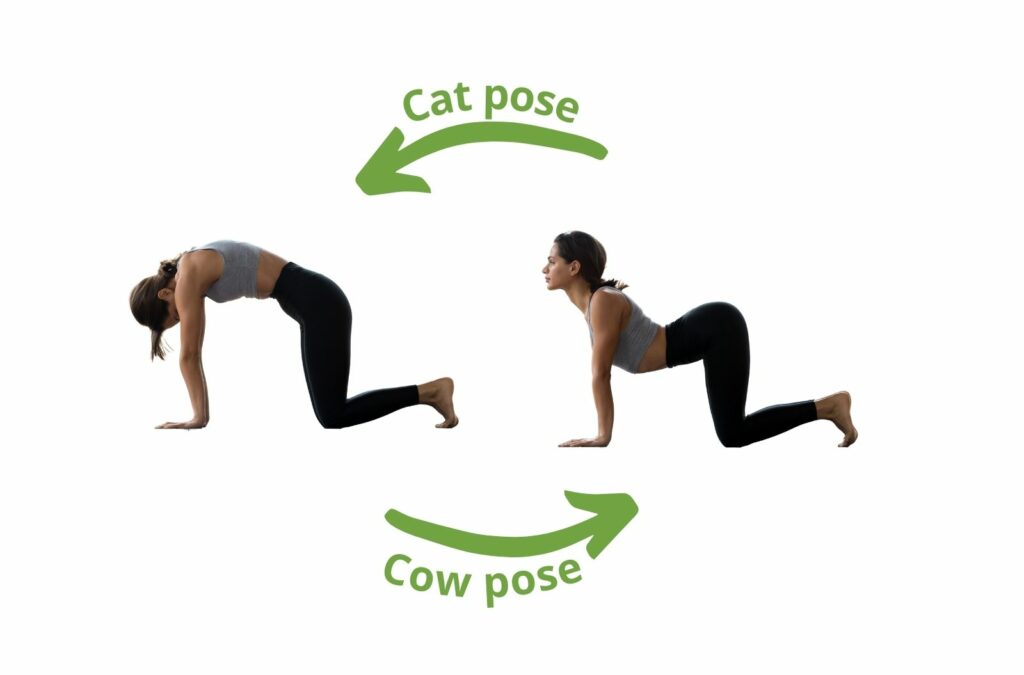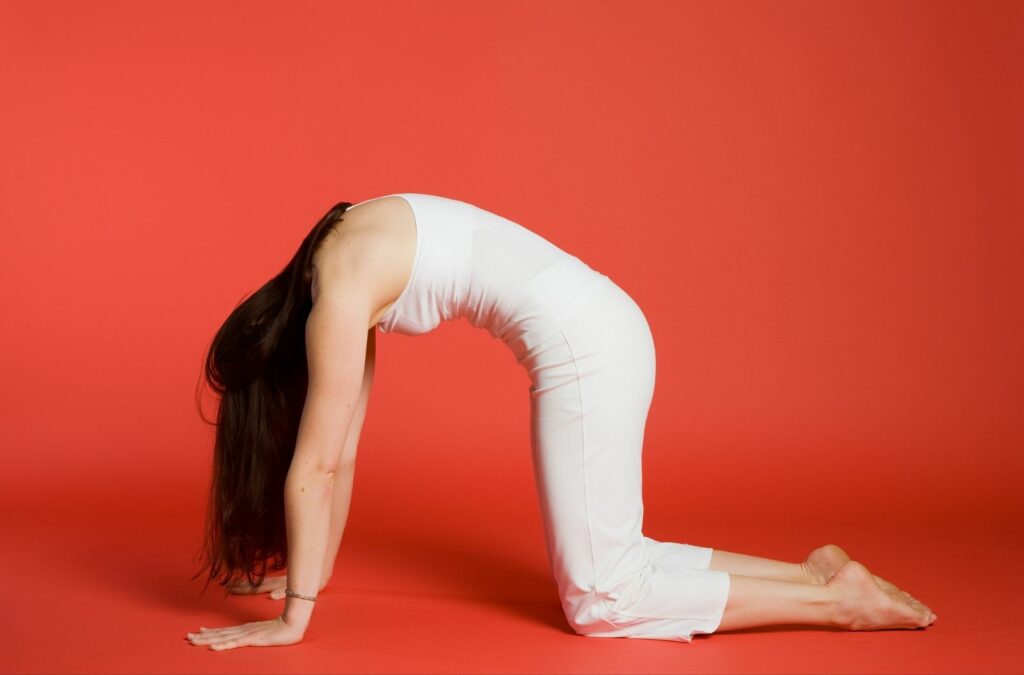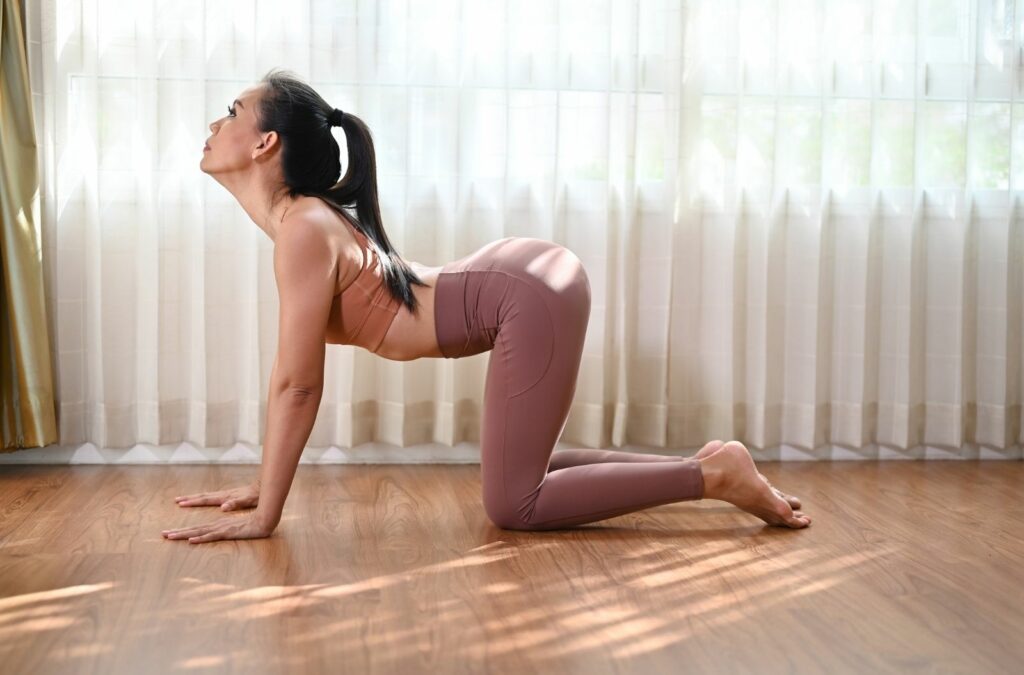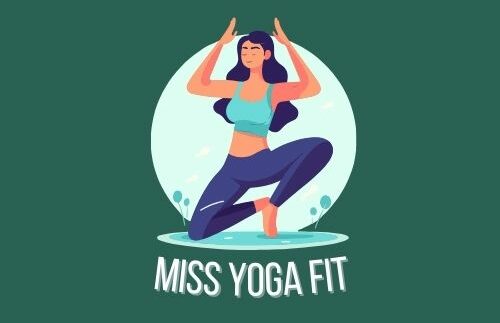As a yogi I’m excited to guide you on how to do the Cat Cow pose, also known as Marjaryasana-Bitilasana in Sanskrit. This pose is a simple yet powerful asana that can benefit your body and mind in many ways. Practicing this pose can improve spinal flexibility and mobility, reduce stress, and promote relaxation.

How to do Cat Cow Pose
Before starting your practice, it’s essential to know the proper form and technique to avoid any injury. It’s equally important to understand the benefits and precautions of the pose. So, let’s dive into how to do Cat Cow pose.
Key Takeaways:
- Cat Cow pose is also known as Marjaryasana-Bitilasana in Sanskrit.
- Practicing Cat Cow pose can improve spinal flexibility and mobility, reduce stress, and promote relaxation.
- To avoid injury, it’s important to know the proper form and technique and to understand the benefits and precautions of the pose.
- Stay focused on your breath while practicing to enhance the pose’s relaxation and mental benefits.
- Start slowly and gradually increase the duration and intensity of the pose over time.
Table of Contents
Understanding Cat Cow Pose
Before we dive into the steps, let’s understand the Cat Cow pose better. Also known as Marjaryasana-Bitilasana in Sanskrit, this asana offers a plethora of benefits to the practitioner.
The name of the pose is derived from the shape the spine takes while performing it, resembling the arches of a cat (Marjaryasana) and the gentle sway of a cow (Bitilasana).
The pose helps to gently warm and stretch the spine, hips, and abdomen, thereby improving overall flexibility. Additionally, practicing Cat Cow pose regularly can improve posture and balance, while also relieving stress and tension in the back.
Before jumping into the pose, it’s essential to prepare the body with a few preparatory poses.
These include Balasana (Child’s Pose) and Adho Mukha Svanasana (Downward Facing Dog Pose). These poses help to open and stretch the hips and spine, making it easier to move into Cat Cow pose.
Fun Fact: In Hindu mythology, cows are considered sacred animals, and their gentle nature is considered calming and stabilizing to the mind and body.
Step-by-Step Instructions for Cat Cow Pose
Now that we’ve gone over the benefits of Cat Cow pose and the precautions to keep in mind, let’s get into the practice. Follow these step-by-step instructions to master this pose:
- Start on your hands and knees with your wrists directly under your shoulders and your knees directly under your hips.
- As you inhale, lift your tailbone and head towards the ceiling, arching your spine and bringing your belly towards the floor. This is the Cow pose.
- Exhale and round your spine, bringing your chin towards your chest and tucking your tailbone under. This is the Cat pose.
- Continue alternating between the Cow and Cat poses, taking slow and deep breaths.
- As you gain flexibility, you can increase the tempo of your movements and try holding each pose for longer.
Remember to keep your movements fluid and controlled, and focus on your breath throughout the practice.

Beginner’s Tips
If you’re new to yoga or have limited flexibility, the following tips can help you practice Cat Cow pose safely:
- Start with slow and gentle movements, gradually increasing the intensity as you become more comfortable.
- Focus on creating a smooth and controlled flow between the Cow and Cat poses.
- Avoid putting too much pressure on your neck and wrists by looking up towards the ceiling instead of straining your neck backwards.
- Use a yoga block or cushion under your knees for added support and comfort.
With practice, you’ll soon be able to enjoy the many benefits of Cat Cow pose, including improved posture, spinal flexibility, and stress relief.
Modifications and Variations of Cat Cow Pose
If you find the traditional Cat Cow pose challenging, you can modify it by using props. For instance, if you have wrist pain or weakness, you can place a folded blanket under your wrists to cushion them. Alternatively, you can use yoga blocks under your hands to reduce the intensity of the stretch.
Another modification is to keep your knees on the ground throughout the practice. This variation is beneficial for beginners or those recovering from an injury. It helps to avoid putting pressure on the wrists and helps to stabilize the body.
If you’re looking for a more intense stretch, you can try the Extended Cat Cow variant. Start in the traditional Cat Cow pose, then extend your right arm and left leg away from each other. Hold the position for a few breaths, then repeat on the other side. This variation targets the core, back, and glutes for a more challenging workout.
Partnering is another way to modify and enhance the Cat Cow pose. To practice with a partner, sit back-to-back with your partner, and interlace your arms around each other’s waist. As one partner inhales and arches, the other partner exhales and rounds their spine. This variation adds a sense of connection and support to your practice.
Remember to listen to your body and modify the pose as needed. Do not push yourself too hard or go beyond your limits.

Conclusion
Cat Cow pose is a simple yet powerful yoga asana that can improve your overall practice. By regularly practicing this pose, you can enjoy a range of physical and mental benefits, including increased flexibility, reduced stress, and improved posture.
Remember to always keep the precautions in mind and listen to your body while practicing. Start with the basic steps and gradually move towards more advanced variations as you build strength and flexibility.
I hope this guide on Cat Cow pose has been informative and helpful. As you integrate this asana into your yoga routine, feel free to explore modifications and variations to make it suitable for your needs. Finally, keep in mind the true essence of yoga, which is to find peace and harmony within yourself.
Joanne Lipston is a certified Yin Yoga teacher in United States, passionate about the transformative power of this practice. With a dedication to promoting strength, flexibility, and mindfulness, Joanne creates an energetic and supportive environment in her classes.

